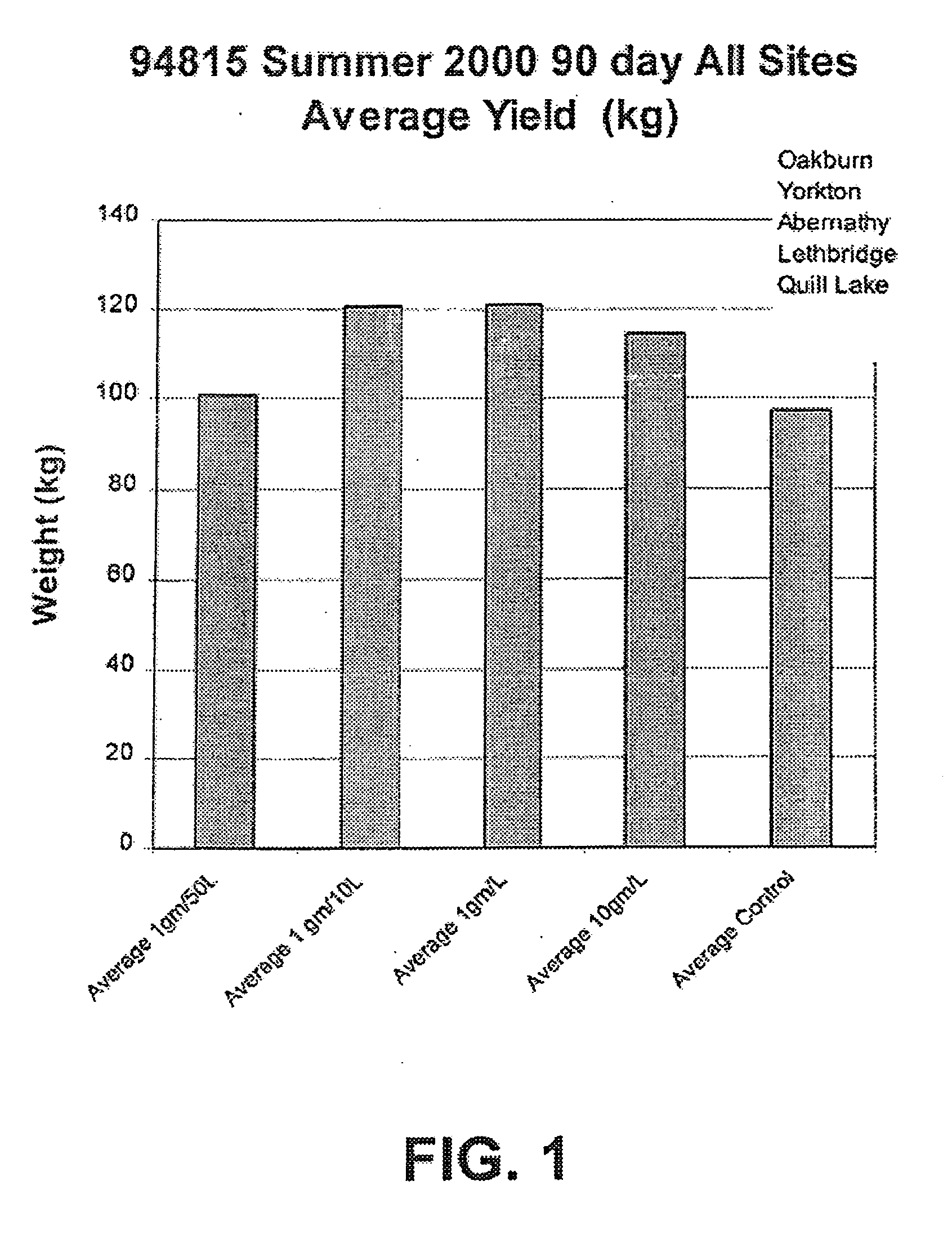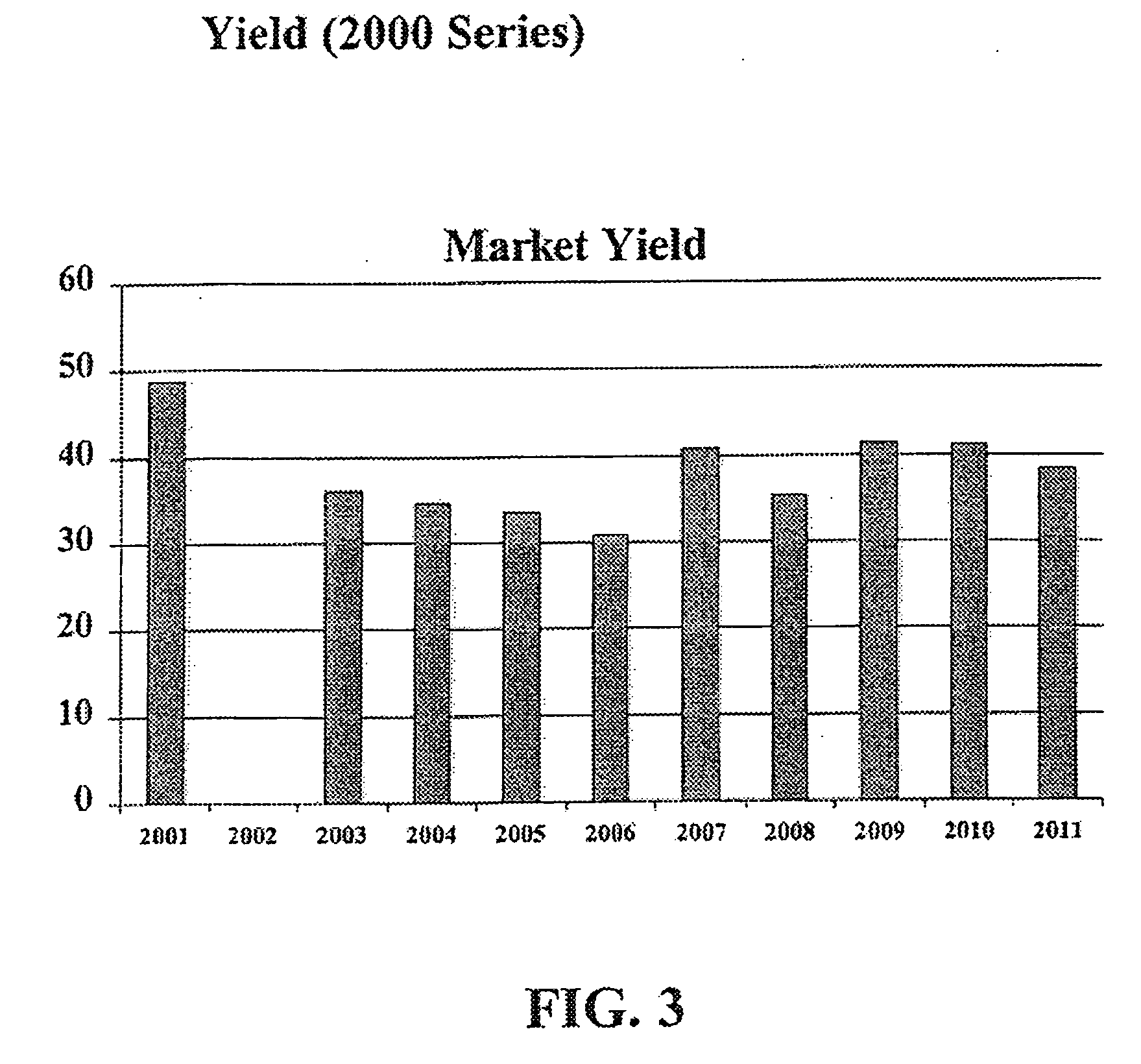Method of protecting plants from bacterial and fungal diseases
a technology of bacterial and fungal diseases and compositions, applied in the direction of biocide, plant growth regulators, animal husbandry, etc., can solve the problems of affecting the emergence of sprouts and stems
- Summary
- Abstract
- Description
- Claims
- Application Information
AI Technical Summary
Benefits of technology
Problems solved by technology
Method used
Image
Examples
example 1
[0036] A quantity of the inventive composition was prepared by mixing 250 g of saponin extracted from quinoa with 200 liters of water. Fourth and fifth generation potato seeds were submerged in the solution after which the treated plants were planted along with untreated plants as the control. The quantity of treatment used was 125 g of saponin per acre of planted potatoes. The potato varieties tested were AC Ptarmigan, Norland, Nordonna, Yukon Gold, and Frontier Russet.
[0037] Portions of the potatoes were harvested 14 days, 28 days, and 49 days after top kill. The potatoes harvested 14 and 28 days after top kill exhibited no black scurf while 2% of the tubers harvested 49 days after top kill had black scurf. The treated tubers showed an increased yield of 42% above that of the control tubers. Furthermore, only 11% of the treated tubers weighed less than 4 ounces in size while 27% of the control tubers were less than 4 ounces in size. Finally, the control tubers exhibited visible s...
example 2
[0038] In this example, Norland potato seed pieces were treated with the preferred saponin material in accordance with the invention at five Canadian sites (Yorkton, Sk., Oakburn, Mb., Abernathy, Sk., and Quill Lake, Sk., and Lethbridge, Ab.) in order to determine the efficacy of the treatment for control of diseases during the growing season, and on crop produced. Stand establishment, disease development during the growing season, final yield, marketable yield and disease levels on harvested crop were measured.
[0039] In particular, at each location a total of five treatments were carried out, namely a no-treatment control and four coating treatments using different levels of a saponin product. This product was alcohol-extracted saponins from quinoa dried to a solid residue as described above, and then mixed with water under mild heat to give treatment dispersions of various concentration. This product is referred to as “94815” and contains more than three saponin active components...
example 3
[0047] In this example, various potato seed piece treatments were compared for their effectiveness in the control of Rhizoctonia, Fusarium and Helminthosporium solani. The materials tested are set forth in Table 3, where “Trigger” is a saponin dispersion in accordance with the invention. All products save for the saponin dispersions are commercially available or experimental products designed for control of potato diseases.
[0048] METHODS: The test site was located in New Glasgow, Prince Edward Island. Soil type was a sandy loam with a pH of 6.0 and an organic matter content of 2.8%. The potato seed (Atlantic variety) used in the study had high levels of Rhizoctonia and was also infected with Fusarium by dipping the cutting knives in a slurry of diseased tissue before each cut. Seed was cut by hand on May 17, 2000 and seed treatments were applied on May 18, 2000 by shaking the seed pieces and the appropriate treatment in a plastic tote for two minutes. The saponin dispersion and in-...
PUM
| Property | Measurement | Unit |
|---|---|---|
| concentrations | aaaaa | aaaaa |
| concentrations | aaaaa | aaaaa |
| lengths | aaaaa | aaaaa |
Abstract
Description
Claims
Application Information
 Login to View More
Login to View More - R&D
- Intellectual Property
- Life Sciences
- Materials
- Tech Scout
- Unparalleled Data Quality
- Higher Quality Content
- 60% Fewer Hallucinations
Browse by: Latest US Patents, China's latest patents, Technical Efficacy Thesaurus, Application Domain, Technology Topic, Popular Technical Reports.
© 2025 PatSnap. All rights reserved.Legal|Privacy policy|Modern Slavery Act Transparency Statement|Sitemap|About US| Contact US: help@patsnap.com



